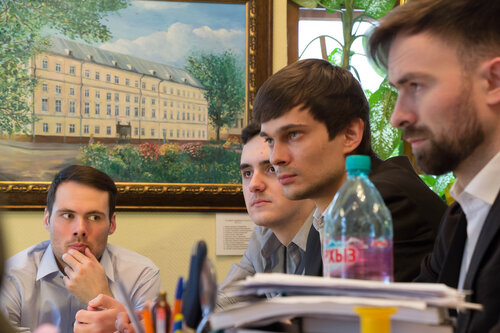A Christmas Carol - Plot summaryA Christmas Carol is a novella by Charles Dickens about Ebenezer Scrooge, an old man, who is well-known for his miserly ways.
On Christmas Eve, Scrooge is visited by a series of ghosts, starting with his old business partner, Jacob Marley. The three spirits which follow, the Ghosts of Christmas Past, Christmas Present and Christmas Yet to Come, show Scrooge how his mean behaviour has affected those around him. At the end of the story he is relieved to discover that there is still time for him to change and we see him transformed into a generous and kind-hearted human being
Social and historical context
A Victorian family decorate a Christmas tree
Dickens wrote this story in 1843. At the time there was a tradition for reading ghost stories at Christmas, hence the numerous spirits that Scrooge encounters. The themes of wealth and injustice are clear comments on the inequalities of wealth distribution in Victorian England.
On Christmas Eve, Scrooge makes his clerk, Bob Cratchit, work in the cold.
He refuses an invitation to his nephew Fred's Christmas party and will not give money to the charity collectors.
At home he is visited by the ghost of his old business partner, Marley.
The Ghost of Christmas Past wakes Scrooge and shows him moments from his childhood, his apprenticeship and his failed engagement.
The Ghost of Christmas Present takes him to the Cratchit's home, where he is saddened by the ill, but kind, Tiny Tim. He is also shown how Fred celebrates Christmas with friends and how others celebrate Christmas together.
The final ghost is the Ghost of Christmas Yet to Come who terrifies Scrooge with visions of his death.
Scrooge awakes on Christmas Day and is delighted to find he has the chance to repent of his miserly ways.
He buys a turkey for the Cratchits and attends his nephew's party.
Scrooge becomes like a second father to Tiny Tim and gains a reputation for knowing how to celebrate Christmas.

Scrooge makes his clerk work in the cold
Scrooge is visited by Marley
The novella begins on Christmas Eve with Scrooge, a mean and miserly man working in his counting-house. His clerk, Bob Cratchit, is working hard and trying to warm himself over a candle as Scrooge refuses to give him more coal.
He refuses Fred's invitation
Scrooge's cheerful nephew, Fred, arrives to wish him a Merry Christmas and to invite his uncle to a Christmas dinner. Scrooge responds with a grumpy 'Bah!' followed by 'Humbug!'
Scrooge dismisses the charity collectors
Two gentlemen enter the office as Scrooge's nephew leaves. They are collecting for the poor and homeless. Scrooge refuses to give them a donation, claiming that the prisons and workhouses should provide for such people. He declares that if they cannot go to prison or the workhouses the poor should die 'and decrease the surplus population'.
Scrooge is visited by Marley
Back at home, Scrooge has strange visions of the door knocker and tiles bearing the face of his old business partner, Jacob Marley. He refuses to believe his eyes, but then Marley's ghost appears and frightens Scrooge by rattling his chains. He tells Scrooge he will be haunted by three spirits.

Ghost of Christmas Past
As promised by Marley's ghost, Scrooge is visited as the bell tolls one o'clock by the first of three spirits: the Ghost of Christmas Past. The apparition is 'a strange figure' seeming to be both an old man and child.
The ghost shows Scrooge scenes from his childhood and a lively scene with his cheerful old boss, Fezziwig. Next he takes Scrooge to a time where his younger self is with his fiancée, Belle.
She is telling the younger Scrooge how she must leave him because he has changed and seems to love money more than her.
Then they see the girl become a woman, with her happy family. Scrooge is upset and the ghost returns him to his bed.
The Ghost of Christmas Present
The second spirit is the Ghost of Christmas Present who takes Scrooge to the Cratchit family where he sees the humility with which the family tolerates its poverty. The sight of Tiny Tim, who is sick and weak, saddens him.
Next the spirit shows Scrooge his nephew and friends as they celebrate and joke about how Scrooge is a 'ridiculous fellow'.
Lastly, the ghost shows Scrooge two poor children, Ignorance and Want. The ghost disappears and a dark hooded phantom comes towards Scrooge.
The final spirit
The final spirit is the Ghost of Christmas Yet to Come who leads Scrooge through scenes relating to a man's death. He shows him the Cratchits whose son, Tiny Tim, has also died. Finally the ghost shows Scrooge the gravestone of the man the people have been talking about. It bears the name: Ebenezer Scrooge.

Scrooge awakes on Christmas Day
Scrooge wakes up full of a zest for life. He presses the bed to check it is real and then laughing, proclaims himself as 'giddy as a drunken man'. He calls out of the window to a boy who tells him it is Christmas Day and Scrooge is delighted to find the spirits have done all their work in one night.
He gives the boy half a crown to buy the prize turkey from the butchers and have it delivered to the Cratchits. Then he dresses and goes out into the street where he meets one of the charity collectors from the previous day. Scrooge whispers his donation to the man, who is very grateful. Then Scrooge goes to church and at last to his nephew Fred's for Christmas dinner.
Scrooge knows how to celebrate Christmas
The next day, Scrooge offers Bob Cratchit a pay-rise and promises to help look after his family. He learns how to laugh at himself and eventually becomes known as a man who knows how to celebrate Christmas.





